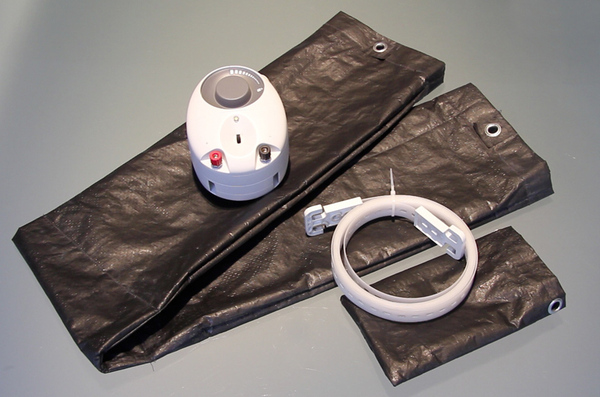GravityLight: a $ 5 light bulb that works on gravity

Therefore engineers from the London company Therefore have constructed a working prototype of a light bulb that works on the force of gravity. It is enough to hang a bag with ballast or any other weight weighing about 10 kg to the device - and the LEDs will glow for about 30 minutes. The idea is that inside the box there is a device like a kettlebell mechanism, which provides for the rotation of the wheels at a constant speed, as in ordinary wall mechanical watches with weights. Probably, here the coil with the generator rotates in a magnetic field and creates an alternating current feeding the light bulb.
The GravityLight light bulb has already collected about $ 317 thousand on the Indiegogo crowdfunding site, almost paying off six times the original plan.
GravityLight light bulbs are proposed to be delivered to Africa, India and South America. In these parts of the world, more than 1.5 billion people live without electricity, using kerosene lamps for lighting.
')
GravityLight is positioned as a more reasonable replacement for the kerosene. In some areas, residents give from 10% to 20% of their income to buy kerosene. In India alone, 2.5 million people with kerosene burns go to hospitals every year, and the evening with a kerosene lamp is comparable to the inhalation of smoke from two packs of cigarettes, so many non-smokers even suffer from lung cancer.
Light bulbs on gravity are predominantly in front of solar panels, which must be installed in well-lit places and additionally equipped with batteries to accumulate charge — to shine in the evening and at night. Here, everything is simple. He lifted a ten-kilogram bag in three seconds - and the light bulb shines for half an hour. Instead of a bag, you can use some kind of decorative elements, such as stones or flowerpots with flowers. Such a lamp can be hung even in a dark basement, unlike photocells.

Developers from Therefore are not just some amateur beginners, but experienced professionals who have been designing and designing various devices for 20 years. They are well aware that the cost of $ 5 will be obtained only in mass production, and therefore they offer to finance the initial circulation of 1000 pieces, which will be sent for testing in Indian and African villages. According to the test results, a more convenient version of the device and additional accessories will be developed.

Probably, such a lamp would be a good gift not only for Africa and India, but also for residents of Russia, Europe and the USA. Still, a rather original gadget that none of the neighbors have. In addition, it is really cheaper, more efficient and more environmentally friendly than conventional solar panels. And if we make a well of 10-20 meters for the weights, then the light bulb can shine the whole day, or even more.
Source: https://habr.com/ru/post/164673/
All Articles